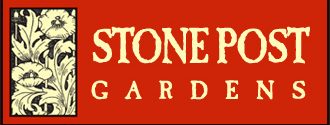Thyme is a classic herb revered for its culinary and ornamental uses. Within the genus Thymus there are over 300 varieties of thyme. Two of the most popular groundcover thymes are creeping thyme (Thymus serpyllum) and elfin thyme (Thymus praecox ‘Elfin’). While they are frequently confused with each other there are some key differences between these two types of thyme.
An Overview of Creeping Thyme
Creeping thyme is a low-growing species that forms a dense moss-like mat reaching 1-2 inches tall. It is hardy to zones 4-9 and thrives in full sun and well-drained soil.
Some of the most popular varieties of creeping thyme include
- Thymus serpyllum ‘Coccineus’ – Deep pink to crimson blooms that attract butterflies.
- Thymus serpyllum ‘Albus’ – White flowers on green foliage.
- Thymus serpyllum ‘Pink Chintz’ – Bright pink flowers in early spring.
Creeping thyme spreads vigorously, making it an excellent groundcover between pavers and stepping stones. It can also cascade nicely over walls or down slopes. The leaves of creeping thyme are green or grayish-green in color and highly aromatic when crushed.
An Overview of Elfin Thyme
Elfin thyme is one of the smallest varieties of thyme, reaching only 1/4 to 1/2 inch tall. It forms a dense, moss-like carpet of tiny leaves that remain close to the ground. Though technically a separate species (Thymus praecox), elfin thyme is sometimes classified as a variety of creeping thyme (Thymus serpyllum ‘Elfin’).
Elfin thyme is hardy to zones 4-8. It thrives in full sun and well-drained soil. This miniature thyme features tiny pink to purple flowers that bloom in summer. The foliage is green or grayish-green and very aromatic.
Due to its miniature size, elfin thyme is ideal for planting between pavers with narrow joints. It also works nicely in rock gardens, bonsai culture, and alongside stepping stones.
Key Differences Between Creeping and Elfin Thyme
Though creeping thyme and elfin thyme have similar growing habits and uses, there are some key differences:
- Size – The most noticeable difference is size. Elfin thyme remains under 1/2 inch tall, while creeping thyme reaches 1-2 inches in height.
- Foliage – Creeping thyme has relatively larger leaves compared to the tiny leaves of elfin thyme.
- Flowers – Creeping thyme features larger flowers that bloom in a wider range of colors like pink, purple, white or red. Elfin thyme has smaller pink or purple flowers.
- Growth – Elfin thyme is the slowest growing variety of thyme. Creeping thyme spreads faster.
- Uses – Due to its miniature size, elfin thyme is better suited to very narrow spaces between pavers or rocks. Creeping thyme has more versatility as a rapidly spreading groundcover.
Growing Tips for Creeping and Elfin Thyme
Both elfin and creeping thyme require similar care when growing:
- Plant in full sun and well-draining soil. Avoid wet, poorly drained sites.
- Space plants 12-18 inches apart if using as a groundcover. Closer spacing for pavers.
- Avoid overwatering. Allow soil to dry between waterings.
- Shear lightly after flowering to encourage new growth.
- Avoid excess fertilization which causes leggy growth.
- Propagate by stem cuttings or division in spring or fall.
- Watch for fungal diseases if sited incorrectly and kept too moist.
- Mulch around plants to suppress weeds and retain moisture. Leave space around crowns.
- Cut sprigs for culinary use anytime. Harvest leaves before flowering for best flavor.
Ornamental and Culinary Uses
Both elfin and creeping thymes are valued for their ornamental and culinary qualities:
- Excellent choices for pathways, walkways, rock gardens, between stones and pavers.
- Cascades beautifully over walls, slopes, containers.
- Releases fragrance when stepped on.
- Provides year-round evergreen foliage and summer flowers.
- Culinary varieties add flavor to meats, sauces, dressings, vegetables.
- Use fresh or dried leaves in cooking. Cut sprigs anytime for recipes.
- Flowers attract pollinators like bees and butterflies.

Growing Creeping Thyme Indoors
Amongst all of the sources I reviewed, no one mentioned how well these plants grow indoors. Some types of creeping thyme look like they would do well in Fairy and Elfin Gardens that are meant to be used inside. The problem is that these plants originated in the Mediterranean and require large amounts of natural light. I found only one person who reported to be able to successfully grow thyme indoors. They had it in a sunny window and used a plant light. There was no mention of a creeping variety, so it wasn’t clear if they were growing a more normal upright plant or a creeping variety.
Have you heard of Elfin Thyme – Newlands Nursery
FAQ
Is elfin thyme the same as creeping thyme?
What are the downsides of creeping thyme?
What is the best thyme for ground cover?
Is Elfin creeping thyme invasive?
- The Ultimate Guide to Growing Strawberries in Raised Beds - August 8, 2025
- No-Dig Garden Beds: The Easiest Way to Grow a Beautiful Garden - August 6, 2025
- How to Protect and Preserve Wood for Raised Garden Beds - August 6, 2025
